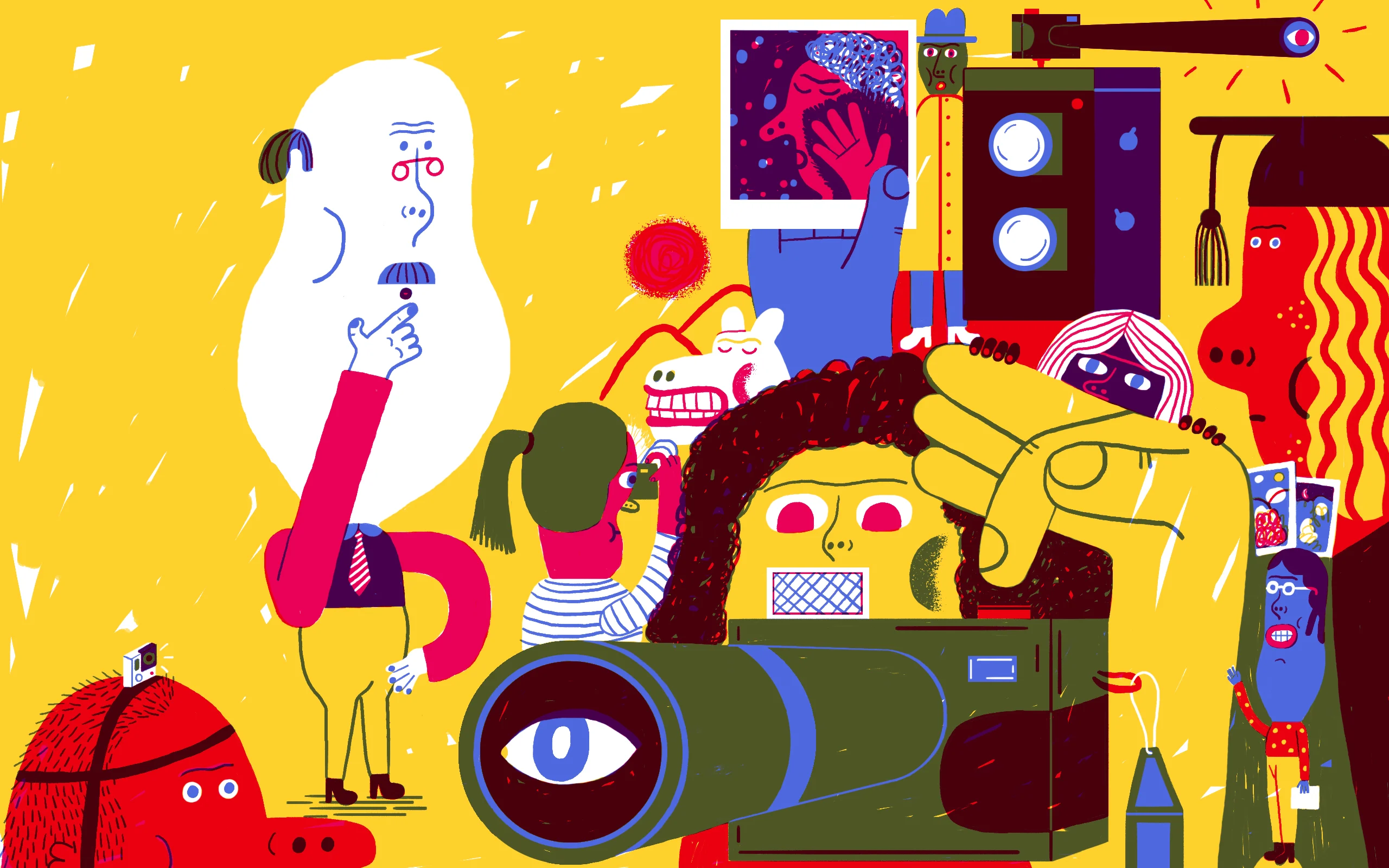

Our Talent 2.0 series explores how creatives think about – and find – good people in the internet age. Here we speak to Tim Jenkin of Making Pictures. Illustration by Lauren Humphrey.
Tim Jenkin is the co-founder of Making Pictures, a photographic agency based in London’s Soho. It “helps develop, nurture, and maintain lasting careers for its artists through curating high quality portfolios, encouraging exceptional artistic and personal projects, and providing a platform through which to identify, direct and facilitate commercial work.”
In 2014 the company launched an illustration agency MP Arts and in 2016 it founded Social Pictures, working with social media influencers.
How do you and your team identify new talent?
It’s mainly websites and blogs of course, but we have had success at a student shows too.
We look at things like Sony World Photo, anything D&AD based, any platform that is recognising young talent. And as we have got bigger and better we are also getting a lot of submissions in. We have a process of three acknowledgements – 1. Not interested 2. Let’s keep an eye on you 3. Come in and meet us. I would say 1% get the meeting.
It’s a fairly small industry – to find someone just by luck is very rare. You would rarely take a risk – it requires two or three years’ development. Someone like Spencer Murphy, we monitored him for a good two years before we signed him. You plant the seeds with people you are interested in fairly early on in their careers, so rather than wait until they have hit the moment, you form a relationship, offer to help them, or just keep tabs on them.
We talk about versatility a lot here – is one style enough? It depends on the artist.
What criteria are you looking for in potential new signings?
Firstly, you look at what you have as an agency and what you are missing. Are there new emerging styles coming through we need to be aware of? A couple of years ago that LA style – very naturalistic, very human, very candid, lifestyle work – was filtering across into the UK and we started looking to sign that here because people were flying them in.
You don’t get the LA light in Hackney, but you have got to find the people with those parallels. We found Olly Burn whose work is very LA; it’s cool, it’s non stock and he’s a technician. It looks like it’s off the shoulder but it’s not, it’s built.
The industry kind of dictates what we do – we are a commercial agency and we can’t change what the industry requires a great deal. We can offer them the best talent for the kind of brief we receive. Signing is a real skill, and finding artists that are going to challenge and inspire art directors is huge.
I often look first at their portraiture. How do they engage with their subject? That says a lot about their personality before you even meet them. Can they take someone and do something really dynamic with them?
We talk about versatility a lot here – is one style enough? It depends on the artist. Some are wonderful with natural light but you can’t take them into a studio. We tend to sign people who have assisted photographers, who have a signature but who are adaptable.

And what might put you off working with someone?
A single style that hasn’t found its craft. They have to have looked at who we manage as an agency and thought, “I can fit in there, that is what they are missing.”
You have to get that bit right but you’d be surprised how often that doesn’t happen. Look at who we have. I can’t believe it when people don’t seem to have looked through the site.
What advice would you have for a photographer who is trying to get signed by an agent?
Look at where you need to be in your career and don’t go in too soon, go in when you’re ready. That’s really important. Don’t burn the chance of getting in front of us when you’ve got valid work. Speak to people; put it under an art buyer’s nose, put it under a publicist’s nose, put it under an editor’s nose. A good agency is getting 20 or 30 attempts per day. If you make a bad impression the first time, it will affect your chances the next time round. Be patient.
More broadly, how has technology changed the way you find and evaluate talent?
People aren’t really looking up at billboards any more or picking up a magazine, they are looking at their screens. It’s quite tribalistic how brands are utilising online platforms to speak to audiences – you can be very, very targeted in who you communicate with now.
That has changed the type of commission we are getting. We are being asked to shoot for social media – a year ago I was looking at budgets that were just tiny, and all of a sudden that’s where the money is being pumped into. That’s where we are seeing the biggest transition.
But for artists you don’t need an agent to start getting a following, you just need to be shooting for an audience that is engaged with your work. On our social division we have people like Olly Lang who is speaking to a very specific audience and brands can have exposure to that audience. We are trying to give that the traditional representation and production support. It’s an interesting new evolution of the industry – we sign two people a year for Making Pictures, but for our social decision we are signing every week.




